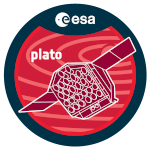The pressure waves trapped inside a solar-type star sense almost the whole medium, and hence their measured properties such as the oscillation frequencies carry detailed information about different layers in the stellar interior. In particular, the frequencies contain small but detectable signatures of the so-called acoustic glitches, the regions of abrupt variation in the sound speed or its derivatives, which can be used to tightly constrain the properties of the regions they originate. For instance, the glitch signatures can be used to measure the locations of the helium ionization zone and the base of the envelope convection zone independent of the stellar evolution models. In this talk, I will summarize the constraints we can obtain on the internal stellar structure and fundamental stellar properties by analysing the helium and convection zone glitch signatures using different theoretical formalisms. Subsequently, I shall demonstrate how the measured helium glitch properties can be used together with the frequency ratios and other classical observables with all the correlations properly taken into account to infer stellar properties including the mass, radius and age precisely. This approach largely avoids the issues related to the surface-effect and, as we shall see, it provides more accurate inference of the stellar helium abundance, and hence also the stellar mass and age.

 PDF version
PDF version
